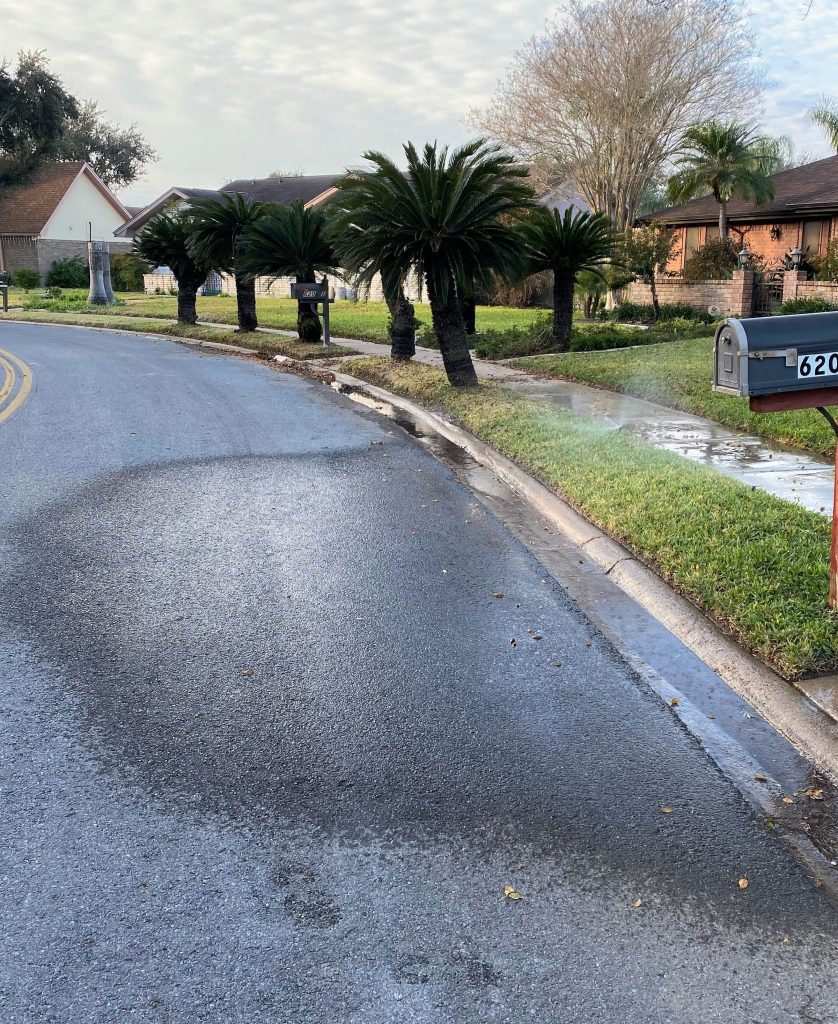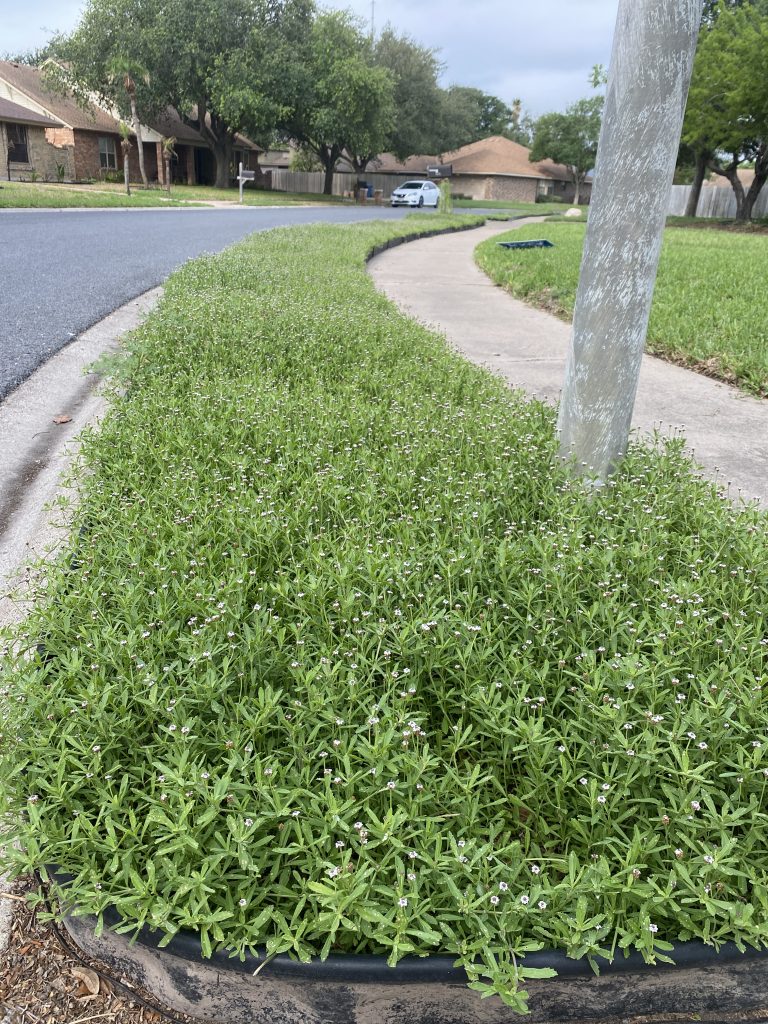by Bill Rich
A few years ago my friend Sylvia Casselman told me that she was excited about some frog fruit that had established itself next to her house. As a novice to the world of native plants I had no idea what she was talking about.
“Frog fruit?” I thought. Is it something that frogs like? Is the fruit edible? Do frogs eat the fruit? The answer to all of those questions was “No.” Sylvia explained to me that frog fruit is a native ground cover that is excellent for areas of your yard with minimal or no foot traffic.

Plants of Deep South Texas, (aka the plant bible) says that Texas frog fruit (Phyla nodiflora) “…is a useful species, producing an attractive ground cover without being invasive”1. Further research told me that ground cover refers to “…low-lying plants with a creeping spreading habit that are used to cover sections of ground while requiring minimal maintenance”2.
Frog fruit sounded like just what I needed to fill in my yard’s Hell Zone; that ugly, difficult to maintain space between the sidewalk and the street. I had never had much success in getting grass to grow in the Hell Zone. It was always unsightly, consisting mostly of bermudagrass sprinkled with enough “stickers” that I never went to the mailbox barefoot. It was always dry, because the hot concrete on either side sucked the moisture out of it. I couldn’t water with a sprinkler without getting much of the water in the street and on the sidewalk. Additionally, the area is awkward to mow.

Frog fruit sounded like a solution to my problem. Being native to the Rio Grande Valley, it just might be able to withstand conditions in the hot, dry Hell Zone. I called Sylvia and asked her for some cuttings. She kindly obliged and with seven frog fruit runners.
I cleared a small area in the Hell Zone, planted the seven runners, and waited. Miraculously, they grew and were soon sending out their own lateral runners. I cleared a new area, dug up some of the new runners and repeated the process. Two years later I had filled in all 120 feet of my area with frog fruit. It only needed to be watered once every two weeks in the summer and once every four to six weeks when the weather was cooler. To irrigate it, I put in a drip irrigation system whichattached to a water hose and a mechanical timer at the faucet. And, best of all, I no longer had to mow it.
I have been delighted with my Texas frog fruit. In addition to making a lush green contrast to the white sidewalk, it has given me many hours of entertainment. It is full of native insects; butterflies, spiders, wasps, flies, and a couple of species of native bees. (Interestingly, honey bees rarely if ever visit the little white flowers.)
My new favorite pastime is going out to the frog fruit patch to observe and photograph the many species of small butterflies that it provides nectar to. From spring to fall it supports a wide variety of skippers; fiery, tropical checkered, common white checkered, desert checkered, and Erichson skippers can be found flitting from blossom to blossom as they feed. Also joining the feast are southern skipperlings, gray and mallow-scrub hairstreaks, bordered patches, and little yellows. But my favorite butterflies in my frog fruit patch are two that use it as their host plant; the colorful little phaon crescent and the graceful white peacock.
Now, it is February. The flowering season is long past and, with the cooler weather, the vines have all but stopped growing; those nearest the ground are dead and turning brown. In a couple of weeks I will put the lawnmower in it and shave it down to the ground. But don’t worry, in a few months it will be back to its full glory and ready for a new season of butterflies and bees!
- Plants of Deep South Texas, Richardson & King, page 418
- The Spruce.com, “What is a Ground Cover Plant?,” David Beaulieu


Leave a Reply